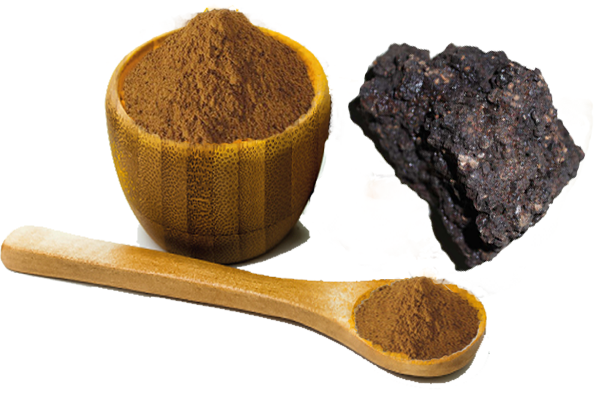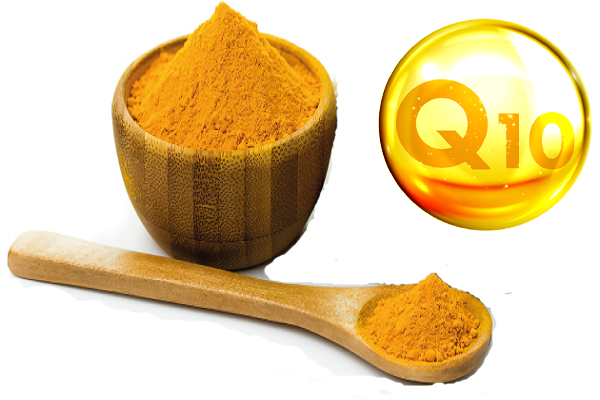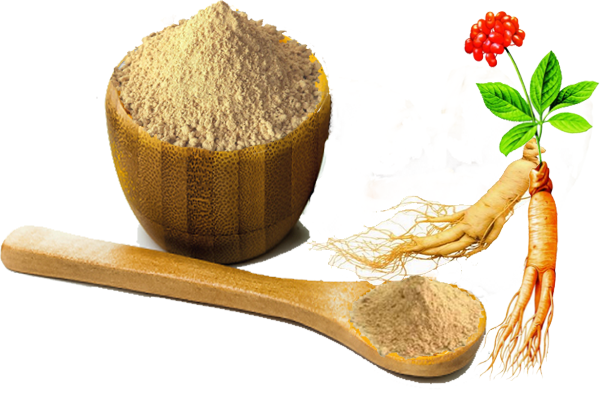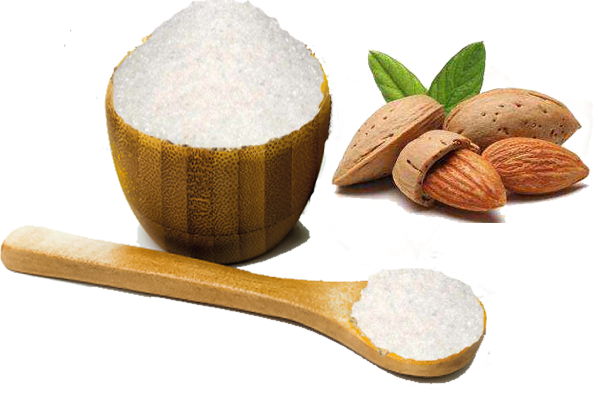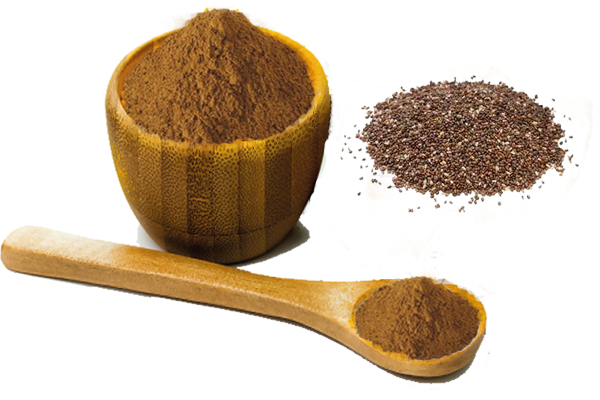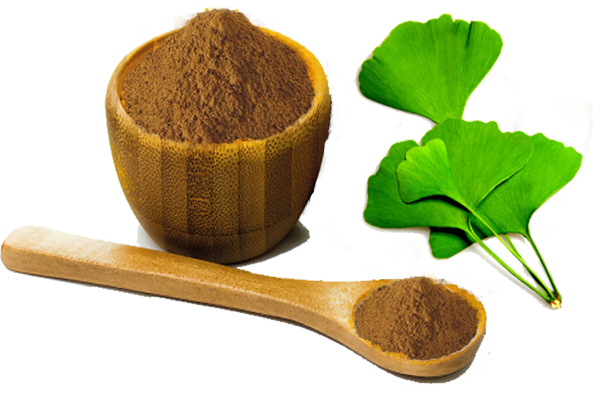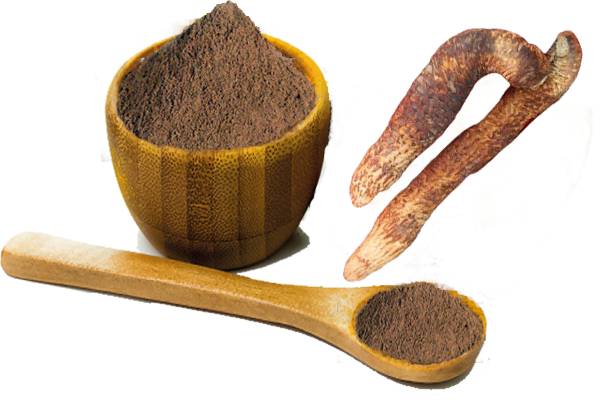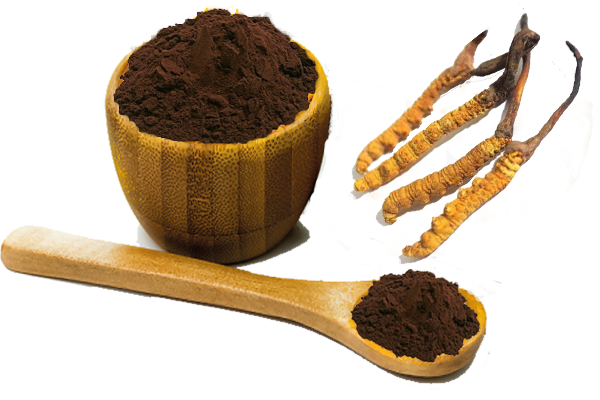
Shilajit Extract Powder
MIGU supplied Shilajit Extract Powder fulvic acid 5%, 10%, 20% 30% 40%, 50%; 10:1, 20:1,refined powder and OEM service with analysis meets the EP, USP, JP, CP.....
Shilajit Extract Powder/Shilajit Extract with Himalaya Mountains Original Material
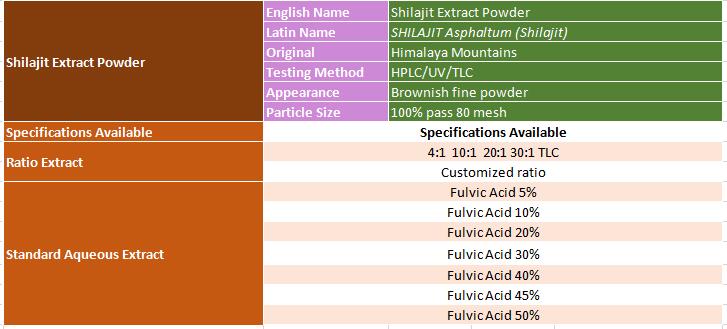
shilajit extract powder specifcation
Shilajit is a Sanskrit word meaning “Conqueror of mountains and destroyer of weakness” and ‘Winner of rock’.Its other names are Silajit and Silaras in Sanskrit,Shilajita Mumiyo, Mineral pitch, Asphalt, Jew’s pitch, Mineral wax, or Ozokerite in English. Shilajit is a pale-brown to blackish-brown exudate in the form of a smooth and clean gum that comes out of the mountains in the months of May-July.Charaka Samhita describes Shilajit as “Stones of metal like gold” while Sushruta Samhitadescribes it as a “A gelatinous substance.”Rasarangini and Dwarishtarang also claim that Shilajitis an exudate of a latex gum-resin of plants.This substance is known as Çilájatu and cures all distempers of the body”.It is found in the lower Himalayan hills at altitudes between 1000 to 5000 meters in Uttarakhand, Himachal Pradesh, Kashmir, and Arunachal Pradesh.It is also found in Afghanistan, Nepal, Bhutan, Pakistan, China, Tibet, and the former U.S.S.R.

Pure Himalaya Shilajit Extract Powder
Molecular Composition of Shilajit Extract Powder
Shilajit is composed mainly of humic substances, including fulvic acid, that account for around 60% to 80% of the total nutraceutical compound plus some oligoelements including selenium of antiaging properties (Figure 1). The humic substances are the results of degradation of organic matter, mainly vegetal substances, which is the result of the action of many microorganisms. Components are divided operationally in humins, humic acid, and fulvic acids according to their solubility in water at different pH levels. Humins are not soluble in water under any pH condition. Humic acid is soluble in water under alkaline conditions and has a molecular weight of 5–10 kDa. Fulvic acid is soluble in water under different pH conditions, and because of its low molecular weight (around 2 kDa), it is well absorbed in the intestinal tract and eliminated within hours from the body . It is likely that the curative properties attributable to shilajit are provided by the significant levels of fulvic acids that shilajit contains, considering that fulvic acid is known by its strong antioxidant actions and likely has systemic effects as complement activator [10]. Recent studies on the composition of Andean Shilajit in Chile have evidenced an ORAC index between 50 and 500 Trolox units/g of material, which is substantially higher than Noni and blueberries (Quinteros et al., unpublished data). In this context, shilajit seems to be a powerful antioxidant phytocomplex.
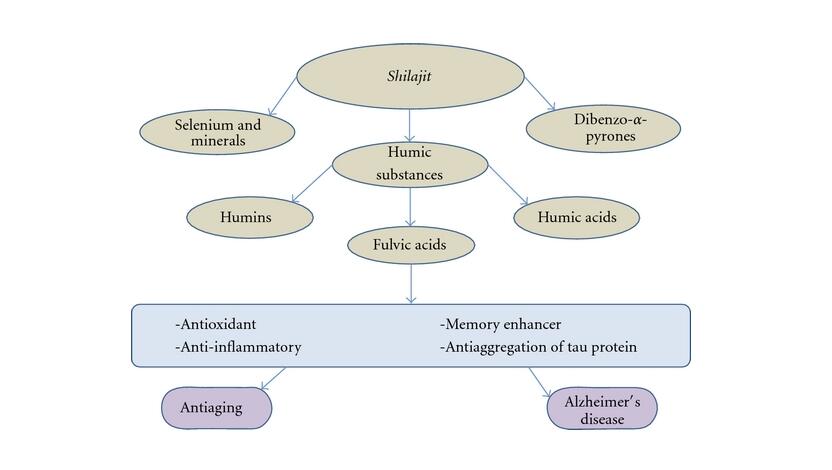
shilajit extract powder figure 1
Other molecules present in shilajit preparations are eldagic acid, some fatty acids, resins, latex, gums, albumins, triterpenes, sterols, aromatic carboxylic acids, 3,4-benzocoumarins, amino acids, polyphenols, and phenolic lipids Certainly its molecular composition varies from region to region. Newer investigations based on high-performance size exclusion chromatography (HP-SEC) show that shilajit contains specific molecular species of polysaccharides and lignins . As humic components, humins, humic acids, and fulvic acids are found in all shilajit preparations, being the last one, fulvic acids, the biologically active compound, along with dibenzo-α-pyrones, which acts as carrier of other substances
Types and Origins of Shilajit
The exact composition of Shilajit is influenced by factors such as :
- Plant varieties that get incorporated into its mass (Sullu spurge, white clover, liverworts, mountain mosses, and others). Mosses are especially rich in minerals and metals such ascopper, silver, zinc, and iron
- Quality of the soil
- Geographical origin of the rock
- Local temperatures
- Humidity
- Altitude
For example, Shilajit from North India is higher in fulvic acids (~21%) than Shilajit from Nepal (~15%), Pakistan (~15%), and Russia (~19%). However, Shilajit from Nepal is higher in other bioactive compounds .
Four different varieties have been described :
- Gold Shilajit, which is actually reddish in color (Savrana)
- Silver Shilajit, white in color (Rajat)
- Copper Shilajit, blue in color (Tamra)
- Iron-containing Shilajit, brownish-black in color (Lauha)
Gold and copper varieties are very rare. The most common, and supposedly most effective variety, is iron-containing Shilajit.
Despite scientific research and traditional use, the exact origin of Shilajit still remains a mystery. Given that it takes a long time to mature and is spontaneously collected, current theories are the best guess scientists could make. The process of making Shilajit was never scientifically replicated or confirmed
Health Benefits of Shilajit Extract Powder
1) Effects on Testosterone & Fertility in Men
Shilajit is traditionally used for improving reproductive health in men. However, it wasn’t until recent clinical trials that its specific effects on testosterone and fertility in men were explored. The available data are still sparse and inconclusive.
In a clinical trial of healthy men, purified Shilajit (250 mg twice a day) for 3 months increased total and free testosterone, as well as dehydroepiandrosterone (DHEAS) .
Shilajit may be absorbed into the testes, where it might decrease oxidative damage, according to cell-based and animal studies. It may also increase sperm production, though this remains to be determined in humans .
Lacking Evidence:
The remaining studies were all conducted on animals or cells and should guide further investigational efforts. However, they should not be interpreted as supportive of any health benefit. Shilajit should not be used for any condition lacking proper safety and efficacy data in humans.
2) Energy Levels
Chronic fatigue syndrome can completely impair a person’s ability to function normally, as people who suffer from it experience extreme tiredness, poor cognition, pain, and disturbed sleep. A possible underlying cause is dysregulation of the HPA (Hypothalamic-Pituitary-Adrenal) axis, the main pathway that responds to long-term stress in the body .
According to some theories, the HPA axis can a profound impact on energy, cognition, and thecircadian rhythm. Thus, certain practitioners think that rebalancing it should be the main goal in people with chronic fatigue. This viewpoint is still controversial, though .
Shilajit could restore the HPA axis and reduce chronic fatigue syndrome in rats. It reduced tiredness and anxiety while preventing excessive drops in cortisol levels and adrenal weight .
Scientists believe that Shilajit may target another potentially important contributor to chronic fatigue: malfunctioning mitochondria. These tiny powerhouses produce all energy in cells. If the mitochondria are not working well, people may feel a lack of energy and other symptoms of chronic fatigue. Shilajit could support mitochondrial health and prevent their damage in rats with chronic fatigue.
However, the effects of shilajit on fatigue in humans remain uninvestigated.
3) Addiction
Some researchers hope that the mix of active compounds in Shilajit may help people overcome addictions, but much more research is needed. No clinical studies exist to support the use of Shilajit in people with addiction and its interactions with psychotropic drugs are unknown.
In one study on mice, Shilajit reduced the symptoms of withdrawal while also helping to curb addictive behavior. It acted by altering dopamine levels in the limbic system (cortico-hippocampal), a brain region that controls emotions .
One group of researchers is wondering whether Shilajit may play a role in the opioid epidemic. It’s a well-known fact that opioids like morphine quickly cause tolerance, which causes people to require higher and higher doses. Shilajit could reduce the risk of developing tolerance to morphine in mice, but its effects on pain and drug tolerance in humans are unknown In another mouse study, the combination of ashwagandha and Shilajit reversed alcohol withdrawal anxiety. More research is needed .
4) Gut Health
As an antioxidant, Shilajit is being researched for protecting the body from stomach damage caused by oxidative stress and inflammation.
Fulvic acid found in this biomass reduced stomach acid and pepsin secretion in the stomachs of rats, which lowers the risk of ulcers. Its effects on gut and stomach disorders in humans are not known.
Benzoic Acid from Shilajit, on the other hand, may have antibacterial properties. Scientists believe it may fight bacteria in the stomach and gut, which could potentially help with SIBO and gut infections in general.
5) Heart Health
Shilajit may have heart-protective properties. It may act by increasing levels of the master antioxidantglutathione. It also provides the body with various nutrients that support heart health.
Humic acid, found in Shilajit, may also help lower blood fats, which reduces the risk of heart disease and stroke. In rats, humic acid reduced total cholesterol and total fats in the blood while boosting the ‘good’ HDL cholesterol .
However, this purported benefit remains unproven due to a lack of clinical studies.
6) Nootropic Potential
According to Ayurveda, Shilajit is a “medha rasayana” or “enhancer of memory and learning.” In one study, purified Shilajit increased learning and memory consolidation in old rats. Unpurified Shilajit, though, produced the opposite response, slowing down the brain and worsening cognition .
While this study highlights the nootropic potential of high-quality Shilajit, it also warns about the dangers of low-quality, unpurified Shilajit formulations.
More high-quality human studies with standardized and purified Shilajit formulations are needed before we can draw any conclusions.
7) Effects on Iron & High Altitude
Shilajit is native to the mountains and people have traditionally used to it overcome mountain sickness at extremely high altitudes. Shilajit allegedly boosts the transportation of nutrients into deep tissues and increases energy levels. Some people say it may improve their ability to handle high-altitude related problems, though clinical trials are lacking to support this claim [1+].
Fulvic acid from Shilajit helps bone marrow cells absorb more iron, which eventually increases the iron content in red blood cells. Adequate iron levels in red blood cells help capture oxygen more efficiently and cope better in low oxygen conditions of high altitude [1+].
Although its folk use at high altitudes is well-established, studies to support its use for preventing mountain sickness are insufficient and limited to cells and animals.
8) Amplifying the Effects of Other Herbs
One of the most interesting purported benefits of Shilajit is its alleged ability to enhance the benefits of other herbs and nutrients.
Traditional practitioners say Shilajit acts as a “general accomplice” and it is classified as a “yogavaha” in Ayurveda, which translates to “an agent which enhances the property of other drugs.”
According to reviews, it may increase the efficacy of Ayurvedic herbs such as [2+]:
- Sal/shala (Shoria robusta)
- Charoli nut (Bachanania lactifolia)
- Sweet acacia (Acacia fernesiana),
Asana (Terminalia tomentosa) - Catechu (Catechu nigrum)
- Myrobalan (Terminalia chebula)
- Bala (Sida cordifolia)
However, these reviews included low-quality studies with questionable findings. Clinical data are completely lacking, and most claims and conclusions stem from traditional and unproven uses.
Research is currently underway to discover whether Shilajit has synergies with other herbs [2+].
9) Stress and Anxiety
Shilajit may increase dopamine levels in limbic, emotional regions of the brain, according to animal studies. Researchers think it may reduce anxiety and the detrimental effects of stress based on its antioxidant and nutrient content. However, proper studies are still lacking to support their theory [11].
In mice, Shilajit increased levels of GABA, the main “calming” neurotransmitter in the brain. Increasing GAMA reduces over-activity in the brain, which may help with anxiety, panic, and stress, but also potentially with seizures. Much more research is needed [17].
10) Antioxidant Defense
Shilajit has antioxidant properties. It could block death pathways in cells (such as p53, Bax, andcaspase 3), protect against damaging free radicals, and increase levels of the master antioxidant glutathione. Overall, researchers consider that it stabilizes cells and increases their antioxidant capacity [18, 19].
11) Inflammation
High neutrophils can damage tissues and worsen inflammation [20].
Scientists are exploring whether humic and fulvic acid, both found in Shilajit, reduce neutrophils and inflammation in the body. Potassium humate from Shilajit blocks complement activation, which reduces the level of numerous inflammatory substances (cytokines like TNF-a, IL-1b, IL-6, and IL-10) in cells [21].
However, the anti-inflammatory potential of shilajit remains to be determined in animals and humans.
12) Brain Function
Head injuries can damage blood vessels in the brain, increase oxidative stress, and cause long-term health problems.
In animal studies, Shilajit helped reduce damage to the brain and speed up recovery by increasing antioxidant levels. Additionally, scientists are exploring whether it can improve brain blood flow and reduce high pressure in the brain [R, R].
13) Alzheimer’s Disease
The brain scans of people with Alzheimer’s disease show clumps of altered proteins (so-called tau fibrils). As these proteins build up and tangle, the disease worsens. In a cell-based study, fulvic acid found in Shilajit significantly decreased the aggregation of these protein tangles. It could reduce the size of proteins and detangle them, showing great potential for combating this disease [22, 22].
Human data are lacking. The effects of Shilajit on Alzheimer’s disease should be investigated in clinical trials.
14) Radiation
Unintended exposure to radiation in the environment increases oxidative stress in the body, which can damage many organs. Radiotherapy, on the other hand, is used to kill certain types of cancers in chemotherapy protocols, but it can harm many healthy tissues as well.
Researchers are investigating whether Shilajit has the potential to help prevent or reduce the damage. It increased the health of ovarian cells after exposure to radiation. Shilajit could turn off cell death pathways, increasing the survival of healthy cells [18].
On the other hand, cell studies don’t tell us anything about its potential effects. Animal and human studies are needed.
15) Blood Flow & Detox
Scientists hypothesize that fulvic acid from Shilajit may improve blood flow and the penetration of nutrients into deep tissues that often need them the most. According to them, fulvic acid may also help remove toxins from deep tissues, enhancing detox. Altogether, the resulting improved blood flow may prevent damage and promote healing in the body [23].
However, clinical data are lacking. Their observations are based on animal and cellular studies
16) Diabetes
The antioxidant qualities of Shilajit protected insulin-producing beta cells in the pancreas from destruction [14, 24].
17) Seizures
In one study on rats, Shilajit sped up recovery from seizures. Higher doses had a stronger effect and could delay attacks and complications [17].
The dosage of Shilajit Extract Powder
There are many challenges to dosing Shilajit. For one, many forms of supplements exist and the exact concentration of active compounds and nutrients in these products is usually known. What’s even worse, many products that claim to be good-quality don’t even contain Shilajit.
Even if you found a good Shilajit supplement, clinical studies are lacking.
One clinical study in infertile men used 250 mg 2X/day for 3 months. This is in line with the dosage used in Ayurvedic practice, according to scientific reviews. The dosage mentioned in most reviews varies between 300 – 500 mg/day. According to Ayurveda, Shilajit powder is mixed with milk and taken two times per day [4, 14].
When it comes to the isolated active compounds, research suggests that up to 1 g/kg/day of potassium humate and up to 1.8 g/day of fulvic acid is safe in adults. This is the highest safe dose and not recommended for general wellness [25].

